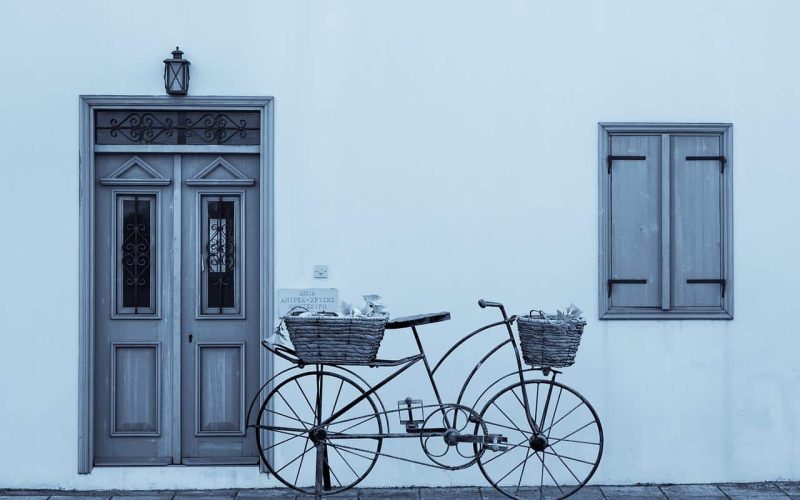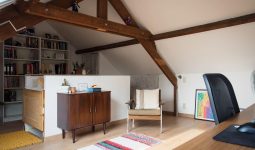Choosing the perfect accessories can be one of the most nerve-wracking things about building a new home.
There are dozens of variables that have to go into your decision, such as room size, house size, overall style, taste, ceiling height, and budget.
Another important decision is choosing the perfect trim for each room. So, what is trim in a house?
Are you tired of the same old and plain design options when decorating your home? Do ugly joints around the floor or window frames bother you? Consider using trim to add style to your home and break up spaces around boring walls and ceilings.
Let’s then find out what is trim in a house. There is trim for everyone, whether you’re a new or existing house owner.
You’ll find countless options for trimming your walls, floors, or stairs.
Trims can complement your existing decor or create a whole new look for your home.
Whether you prefer traditional or modern design, read on as we’ll learn what trim is in a house and affordable and easy-to-use decorating options to spruce up your home and add a personal touch to your floors, walls, and other elements.
What is Trim in a House?
A small but powerful finish design element in a room or around a building, trim, also known as molding or casing, is one of the best ways to add depth and beauty to any room.
It is a millwork used to frame windows, doors, walls, floors, and even ceilings for practical and decorative purposes.
They add depth, detail, and richness to any room; they are the best way to make any home stand out and look like a million-dollar house.
Most people who are building a new home don’t give it much thought.
They generally do not consider the size, style, and material used, how they flow from room to room, and how they blend in with the house’s overall style, which they shouldn’t. These are essential factors to consider.
Trims typically fill the gaps between two areas but can also be very decorative, setting a room’s style and tone.
Trims can also help protect surfaces. For example, chair rails prevent a sliding chair from striking the wall.
Trims are mostly made of wood, but nowadays, they can also be made of more affordable synthetic materials like polystyrene, polyurethane, and PVC. They can also be plaster.
There are several types of trim, baseboards, crown moldings, window and door casings, and chair rails, all of which work together to form a cohesive look that becomes an integral part of your architecture. Keeping track of them all can be a bit confusing.
But we’ll help walk you through all the basics, so you know exactly how to describe what you’re looking for or what your designer or contractor is talking about!
PS- Designers and contractors may sometimes throw around the words “trim,” “casing,” and “molding.”
It can be used interchangeably to describe millwork types: “Casing is a special type of molding used to trim windows and doors.”
You can comprehend what trim is in a house, but before you start shopping for the right trim for your home, it’s essential to know what types are available.
Let’s look below at some types of trims that can be present in a house.
Different Types of Trim in a House
Here are basic explanations of the different types of trims to help you understand what trim is in a house better:
1. Crown Molding
As its name suggests, crown molding is the king (or queen!) of trims. It has long been one of the most popular types of millwork and is still installed in homes today.
Crown molding is usually installed along the top of about 2 to 12 inches of a wall. It requires mitered cuts at the corners and comes in several profiles.
It provides a visual transition between walls and ceilings while helping to establish the room’s style and decor.
It covers the junction where the wall meets the ceiling and visually draws attention to the feel of taller walls.
Crown moldings can also hide imperfections in drywall or plaster in hard-to-finish corners and joints and conceal wiring for lighting and speakers.
The style and size of this trim should be carefully selected to match the room’s dimensions and design, as oversized molding can spoil the look of the walls.
It doesn’t have to be fancy, but many homeowners need a little decoration to spruce up the space. Trim profiles can be designed based on old column designs.
The Ogee trim has a simple S-shape, while the rosevine profiles have graceful flowers and vines.
The egg and dart molding consists of a series of ovals and lines, while patterns of squares or rectangles portray dentil molding.
Cove profile crown molding has a simple, curved shape that suits modern decor [source: This Old House].
Generally, larger crown molding pieces are more formal, while smaller pieces with fewer curves and ridges are more casual and modern.
2. Baseboards
Baseboard is also an incredibly popular type of trim, acting as a counterpoint to crown molding. Cover the joint where the wall meets the floor.
Baseboards help to protect the base of a wall from damage while hiding expansion joints or gaps between the wall and the floor.
They can also be decorative frames around a hardwood floor to draw attention to the floor’s natural beauty.
Homeowners will find many baseboards to complement any decorating style; the simplest units are made from rectangular pieces of wood, while the more intricate moldings are carved into elegant shapes or profiles.
Baseboards can be used alone for a clean and basic look, while others are paired with quarter-round molding.
The quarter-round molding is placed in front of ground-level baseboards to hide expansion joints further or even protect the molding from scratches and damage.
Since it’s not always as noticeable as crown molding (furniture often covers it up), homeowners tend to keep it much simpler.
Chair Rail
One of the most practical trims, the chair rail, is installed mainly to protect the wall from bumping into it and damaging it—damage such as scratches and dents caused by the chairs’ impact.
When residents move away from the table or adjust the position of the chair, the chair back will hit the chair rail instead of the wall.
The chair rail molding is placed on the wall about one-third of its height from the floor.
As such, this type of decor is most prevalent in dining rooms. Sometimes, you will also see panels below.
However, the chair rail can also break up a large or high wall. A bare wall may seem too plain or dull, but a chair rail can instantly (and subtly) change the look of a room.
It can be used alone or with other types of trim, such as baseboards or wainscoting.
Some chair rails are pretty elaborate and can complement traditional or colonial decor.
Simple round or square chair rails create clean, straight lines that will generally benefit more modern homes.
Wainscoting
Although wainscoting is technically paneling rather than trim or moldings, it often falls under the same umbrella as decorative wall millwork.
It uses large panels on the lower half of a wall. These panels can be used alone or sandwiched between chair rails and baseboards.
This trim helps to protect walls from damage while providing a decorative finish.
Modern wainscoting made with vinyl or plastic can even be used in bathrooms and kitchens to reduce water damage. As a bonus, it makes it easier to keep your walls clean.
Picture Rails
Like chair rails, picture rails are also practical and have a purpose. They are established between a foot or two feet below the ceiling and are about an inch wide, although larger versions are available.
You can hang beautiful artwork without damaging your walls – nail them to the molding instead of the wall.
However, over the years, the picture rail has become a decorative element in its own right.
The picture rail traditionally has a relatively simple design. Depending on the style of the room, a picture rail can be used alone or in combination with crown molding and other trim elements.
Though modern picture rails can still hang pictures, they mainly serve a decorative function by complementing certain design styles.
It can also be a simple tool for dividing large wall surfaces or separating different wall finish types.
Friezes
A frieze is a large panel and is one of the most complex trim types around the house.
It is traditionally installed between rows of crown molding and picture rail and can range from a few inches to over a foot in height.
Friezes are most often found in classical or Victorian decorations. Some modern design schemes may feature a single frieze without other accompanying trims to add an understated decorative element to the room.
This is particularly true with salvage or antique tin frieze panels, which can be painted or left unfinished.
Doors And Window Trims (Casing)
Any trim around a door or window is called casing. Door and window casing are trim elements used in the home’s doors, windows, arches, and framed openings.
They can vary from very complex to simple rectangular profiles and are usually made of wood or vinyl.
The outer edge of these casings is generally flat, making them flush with baseboards and other types of wall trim.
Most window and door casings are interchangeable, so if you find a style you like, you can use it to trim almost any type of opening around the house.
It is both decorative and practical. Casings create a decorative finish on doors and windows and can also help tie different architectural elements together to develop a cohesive look in a room.
This trim also serves a practical purpose by hiding unsightly gaps around door and window frames.
It can even help hide minor drywall imperfections that can show up when painting doors and windows.
Pillars And Pilasters
Columns were once used in house construction as structural support for roofs.
Although these structural columns are not found in most modern homes, smaller units are often used to mimic the look and feel of classic column designs.
Thinner columns are called pillars or pilasters and are generally used for decorative purposes.
Many builders use these terms interchangeably. Pilasters can typically be recessed into a wall, while pillars are surface-mounted or freestanding.
A pillar or pilaster provides a unique accent and can frame a fireplace, doorway, or other openings.
These units are also useful for spotlighting a piece of art or an architectural element.
Most of the pillars and pilasters are stylized according to the designs of ancient Greek and Roman columns. They have three elements: Crown, shaft, and pedestal or base.
Many manufacturers sell interchangeable units, allowing owners to match and mix different styles to create a unique look.
Wood and plaster versions are usually the most common, although fiberglass offers an attractive, budget-friendly alternative.
Stair Stringers And Brackets
Trims aren’t just for walls and floors. It can also be used on stairs. No matter what type of stairs you have in your home, there is usually a way to add trims to complement the surrounding decor.
Adding stair stringers can give a closed or square staircase with walls on at least one side a whole new look. The stringers are large, flat panels ranging from 1 to 2 feet tall.
They are placed along the joint between the stairs and the wall and usually run at the same angle as the stairs.
The top and bottom of each panel can be finished with decorative moldings or left unfinished for a simpler look.
Although stringers are primarily used for aesthetic purposes, they can also provide structural support for older stairs.
For open staircases, homeowners can add brackets for style and flair.
These brackets are installed at the triangular area where risers and treads meet on each side of the stairs.
They are often made of wood, although some older units are made of iron.
Other trim types around the house may include:
Pierced Molding
Pierced molding is a decorative trim that is not completely solid in shape but is cut so that the wall behind it can be seen.
Architrave Molding
Architrave is a type of trim placed above windows and doors for decorative effect.
Beadboard
Beadboard is a type of wainscoting (meaning it’s also a panel, not technically trim or moldings) made up of a series of vertical boards with separate ridges called beads. It can be framed with trim.
Cove
Also known as coving, coving is a plain, cove-shaped trim used where walls and ceilings meet. It can also be used on stairs where risers and treads meet. The Cove can be seen as a less decorated version of Crown molding.
Corbel
Corbels are loose L-shaped brackets between a vertical surface (like a wall) and a horizontal surface (like a ceiling or countertop). Although initially designed to support weight, they can also be decorative.
Plinths
Plinths are blocks used at the door’s base as a decorative addition to the casing.
Batten
The molding, also called board and batten, is a piece of wall trim used to hide the joint between two pieces of paneling.
Conclusion
Now that we probably know all about trim in a house and its various types, we should also remember that trims can be sold in a wide range of sizes, materials, and styles.
And that’s exactly the kind of stock sold at your local Home Depot or Lowes.
Custom trims layers trims of different sizes and styles, creating an impossible look with one-piece molding.
For this, you will need an excellent design and an installer with the necessary skills and experience.
Whether you want to keep it chic, modern, fun, rustic, or quirky, custom trims are a great way to make your home look its best.








